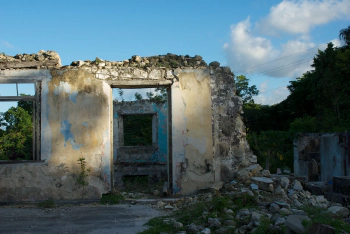
Seville Great House
The English captured Jamaica in 1655 from the Spanish. The captains and generals of the conquering army were given large swathes of the island to reward their success.
One such area was the Seville Estate, given to Captain Hemmings. Before the Spanish, Taino peoples from South America had settlements in the area now known as Seville.
The Spaniards imported Africans as slaves to work the sugar, and later Copra, the English continued this activity.
Built towards the end of the 17th century by Hemmings’ grandson, Seville Great house, originally a two-storey house, the top floor blew off during a hurricane in the 19th century. The occupants never restored the upper floor to the place, and it remains the same today.
Seville currently operates as a heritage park where visitors learn about the various known inhabitants of the area. Once a 3000 acre estate, extending from Clayground in the north to the Caribbean Sea in the south, Seville is much smaller. What remains known as Seville Estate is now merely 300 acres, split by the main coastal highway that runs on the northern side of the island from Montego Bay in the west to Port Antonio in the east.
The last private owners of the estate were the Hoskins family. Their family burial plot lies close to the front garden. Unfortunately, the final remaining spot is empty as the youngest sister did not die on the island.
At Seville Heritage Park, you can take a tour of the great house and the grounds and learn something about the area’s past inhabitants, from the Taino, through to the English.
Several archaeological digs have been carried out there, revealing artefacts from the past that demonstrate how the inhabitants lived.
There are also reconstructions of a Taino village and African house on the site and the ruins of some of the plantation workers’ quarters, most notably, the overseer’s house and the intact structures of the copra kiln and chimney.

